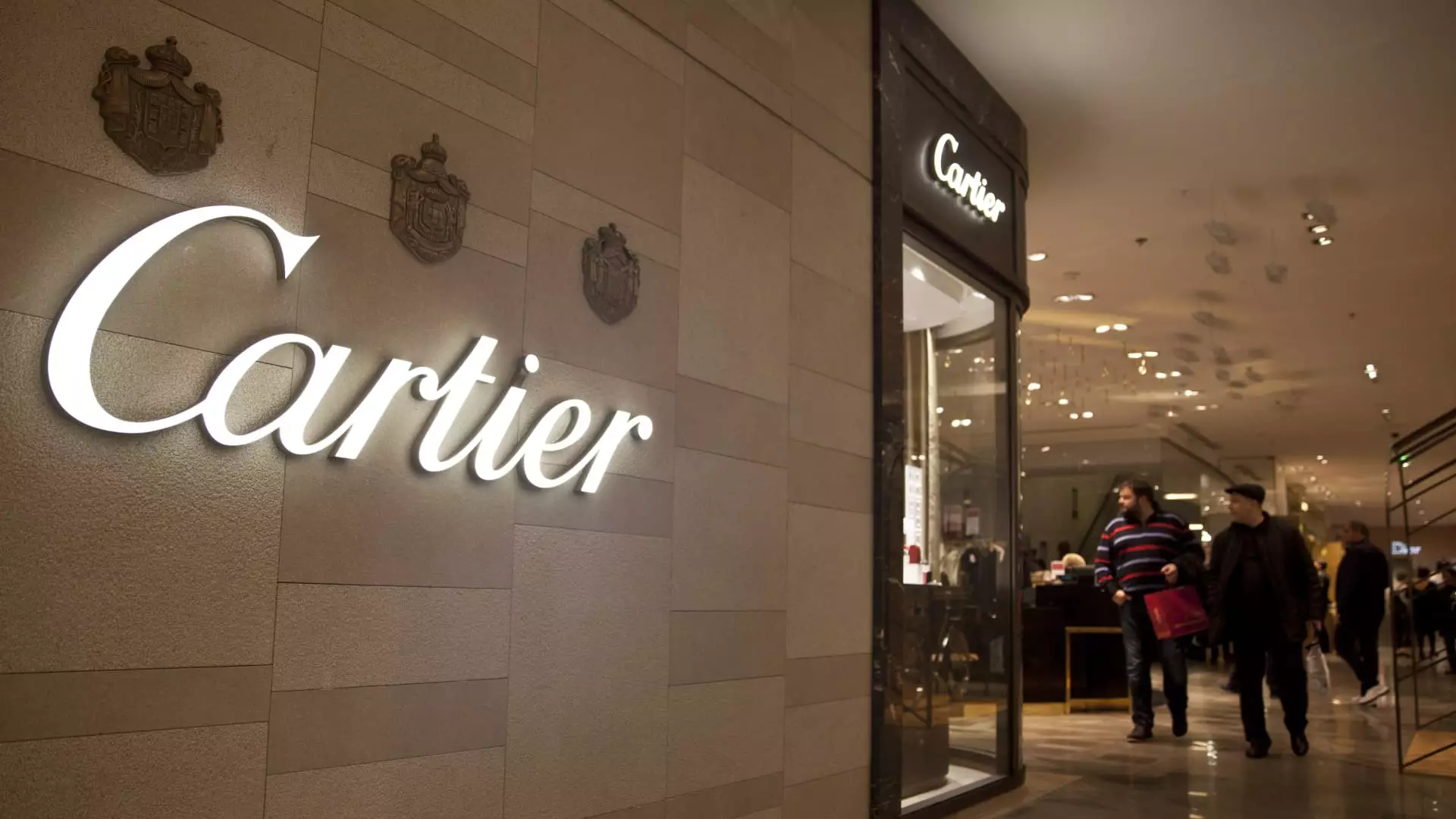In a noteworthy turn of events, shares of Richemont, the luxury conglomerate known for its ownership of Cartier, soared by over 17% following an impressive report of a 10% increase in fiscal third-quarter sales. This surge translated to sales amounting to 6.2 billion euros ($6.38 billion) at constant exchange rates, marking what Richemont described as their “highest ever” quarterly sales figure. Analysts had only anticipated a modest increase of 1%, illustrating the extent to which Richemont has outperformed expectations. The positive performance has sparked optimism among investors regarding the luxury sector’s resilience during a challenging economic period.
The luxury market, particularly in Europe, has been under scrutiny as consumers navigate varying economic conditions and shifting consumer behaviors. With global luxury trends experiencing fluctuations, the robust performance of Richemont’s stock and its peers, including Christian Dior, LVMH, and Hermès, signals that the luxury sector is not only surviving but also thriving in certain areas. The timing of this surge coincides with the holiday shopping period, traditionally a significant revenue generator, which may have further propelled these stock movements.
However, it’s important to note the disparate performance across geographic regions. While Richemont showed double-digit growth across most markets, Asia Pacific presented a notable deviation, with a 7% decline in sales primarily due to a sharp 18% decrease in mainland China, Hong Kong, and Macau. This highlighted the continuing struggle of the luxury sector to regain footing in China, a market that was once the bedrock of luxury demand, particularly in the wake of the COVID-19 pandemic.
The decline in Asia Pacific sales serves as a stark reminder of the challenges that lie ahead for luxury brands. Despite seeing positive growth trends in Europe and the Americas, the Asian market, particularly China, remains mired in economic uncertainties and a sluggish recovery from pandemic-induced disruptions. As luxury brands strive to re-establish their presence in these markets, they face ongoing pressures from changing consumer preferences and a cautious approach to spending among wealthy Chinese consumers.
Richemont’s recent performance reflects a complex interplay of factors. The company has experienced volatile stock movements over the past year, partly due to leadership changes and broader industry shifts. Following the appointment of new CEO Nicolas Bos, formerly the president of Van Cleef & Arpels, investor sentiment has shifted positively. The 28.75% rise in stock value over the year underscores this renewed confidence, but it also raises questions about sustainability.
Looking ahead, analysts remain cautiously optimistic about the luxury sector’s prospects, particularly as signs of recovery materialize in Europe and other regions. Senior analyst Luca Solca from Bernstein noted that Richemont’s performance could be indicative of broader trends across the luxury landscape, hinting at a possible resurgence in consumer appetite for luxury goods.
The European market, along with the Americas, seems to be buoyed by robust local demand and increased tourist traffic, positioning them as potential leaders in the recovery narrative. Nevertheless, sustaining this growth will require strategic efforts from luxury brands to engage with consumers effectively and adapt to the changing dynamics.
While Richemont’s recent results provide hope for a recovering luxury market, the ongoing struggle in the Asian sector, particularly China, underscores the complexity of global luxury dynamics. The company’s ability to capitalize on growth opportunities while navigating headwinds will be crucial as it strives to maintain its position as a leader in the luxury industry. As the market continues to evolve, stakeholders will be keenly observing how Richemont and its counterparts adapt to new challenges and consumer expectations.

